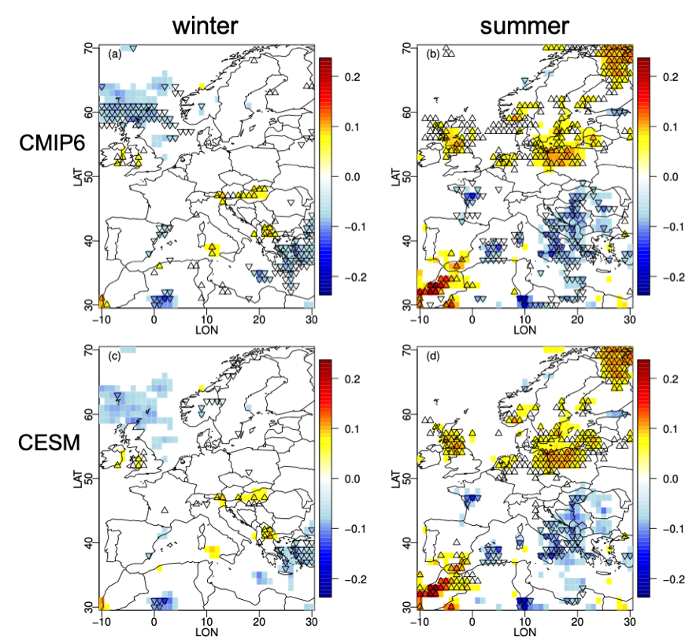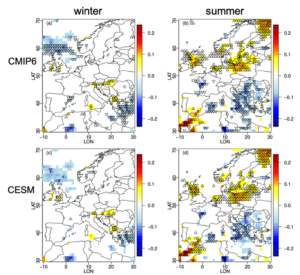by Mathieu Vrac, Soulivanh Thao, Pascal Yiou
Changes in temperature–precipitation correlations over Europe: Are climate models reliable?
by Mathieu Vrac, Soulivanh Thao, Pascal Yiou
Inter-variable correlations (e.g., between daily temperature and precipitation) are key statistical properties to characterize probabilities of simultaneous climate events and compound events. Their correct simulations from climate models, both in values and in changes over time, is then a prerequisite to investigate their future changes and associated impacts.
Therefore, we first evaluated the capabilities of one 11-single run multi-model ensemble (CMIP6) and one 40-member single model initial-condition large ensemble (CESM) over Europe to reproduce the characteristics of a reanalysis dataset (ERA5) in terms of temperature–precipitation correlations and their historical changes. Both CMIP6 and CESM ensembles have season-dependent and spatially structured biases. Moreover, the inter-variable correlations from both ensembles mostly appear stationary, although reanalysis displays significant correlation changes. Hence, none of the ensembles can reproduce these changes in temperature-precipitation correlation.
Next, we compared the ensembles’ correlations for the end of the 21st century: Future correlations show significant changes over large spatial patterns but these patterns are rather different for CMIP6 and CESM, reflecting a large uncertainty in changes.
In addition, for historical and future projections, an analysis conditional on atmospheric circulation regimes is performed. The conditional correlations given the regimes are found to be the main contributor to the biases in correlation over the historical period, and to the past and future changes of correlation.
These results highlight the importance of the large-scale circulation regimes and the need to understand their physical relationships with local-scale phenomena associated to specific inter-variable correlations.
Reference



